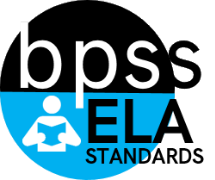ELA-10.SL.06
|
10th Grade ELA Targeted Standards
[SL] Speaking and Listening Strand
Cluster: Presentation of Knowledge and Ideas
ELA-10.SL.06 Adapt speech to a variety of contexts and tasks, demonstrating command of formal English when indicated or appropriate. (See grades 9–10 Language standards 1 and 3 for specific expectations.)
|
Student Learning Targets:
Knowledge Targets
- I can determine whether or not an audience and occasion calls for a formal or informal tone and style.
- I can identify various reasons for speaking (e.g., informational, descriptive, formal, informal).
Reasoning Targets
- I can determine what style, syntax, diction, and tone matches given formal and informal situations.
- I can determine speaking tasks that will require a formal structure.
Skills (Performance) Targets
- I can adapt speech to variety of contexts and tasks, demonstrating effective use of formal English when necessary.
Product Targets
- I can compose a formal speech that demonstrates a command of grades 9-10 language standards.
Proficiency Scale
| Measurement of Progress |
Presentation of Knowledge and Ideas:
-
SL9-10.4 Organize, develop, and present claims, information, findings , and supporting evidence, using communication technique appropriate to purpose, audience, and task.
-
SL9-10.5 Make strategic use of digital media (e.g., textual, graphical, audio, visual, and interactive) in presentations to enhance understanding of findings, reasoning, and evidence and to add interest.
- SL9-10.6 Adapt verbal and nonverbal communication to a variety of contexts, audiences, and tasks, demonstrating fluency and poise, and a command of formal English when indicated or appropriate.
|
Sample Activity
|
| Advanced |
In addition to expectations of proficiency, student provides consistent evidence of in-depth inferences and applications that go beyond what was taught and expected.
|
- |
| Proficient |
-
The student can
-
present information clearly, concisely, and logically.
-
delivers a presentation in which organization, development, substance and style are appropriate to purpose, audience, and task.
-
strategically integrate appropriate digital media or visual aids to enhance interest and understanding.
-
employ effective verbal and nonverbal delivery techniques: eye contact, rate, volume, inflection, pronunciation, enunciation, gestures, poise, language, conversational tone.
|
- |
| Progressing |
There are no major errors or omissions regarding the simpler details and processes as the student:
-
presents information in a logical and organized manner.
-
delivers a presentation appropriate to purpose, audience, and task.
-
integrates appropriate digital media or visual aids.
-
employs some effective verbal and nonverbal delivery techniques: eye contact, rate, volume, inflection, pronunciation, enunciation, gestures, poise, language, conversational tone.
-
recognizes or recalls specific terminology that relates to speaking and listening skills, such as:
-
Digital media, rate, volume, inflection, pronunciation, enunciation, gestures, poise, language, conversational tone.
However, the student exhibits major errors or omissions regarding the more complex ideas and processes.
|
- |
| Novice |
With help, a partial understanding of some of the simpler details and processes and some of the more complex ideas and processes. |
- |
Resources
Websites
Vocabulary |

